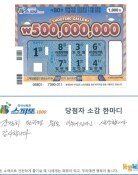Good Economic Indicators, But Bad Economic Sentiments
Good Economic Indicators, But Bad Economic Sentiments
Posted September. 04, 2007 07:45,
Real gross domestic product (GDP) growth showed an increase of 2 percent in this second quarter, compared to the previous quarter, for the first time in 3.5 years.
In addition, the double-digit growth rate in exports continued for 19 straight months (year-on-year).
However, despite such positive economic indicators, economic experts point out, A gloomy economic sentiment still prevails as the GDP growth rate depends on exports oriented towards conglomerates, and SME-oriented demand is still sluggish.
According to a recent report titled The National Income in the Second Quarter of 2007 released by the Bank of Korea, real GDP in the second quarter grew by 1.8 percent compared to the previous quarter, the highest rate since the fourth quarter growth of 2.7 percent in 2003. It is an increase of 5.0 percent compared to the same period last year.
The real Gross National Income (GNI), an indicator that measures actual purchasing power in the national economy, increased by 2.2 percent compared to the previous quarter, and by 4.7 percent year-on-year.
The reason for the increase of real GDP in the second quarter was analyzed to be soaring exports, thanks to a turnaround in the manufacturing sector along with the high growth rate in the financial and insurance businesses, and thanks to the stock market boom.
The manufacturing sector grew 3.6 percent compared to the previous quarter (5.9 percent year-on-year) due to the boom in the exports of semiconductors, industrial machinery, shipping, and automobiles, while the financial and insurance businesses grew by 9.7 percent year-on-year, and 5.1 percent, compared to the previous quarter.
The export of merchandise was oriented toward semiconductors, automobiles, shipping, and industrial machinery, increasing 5.2 percent compared to the previous quarter (10.6 percent year-on-year), raising the GDP growth rate overall.
Furthermore, according to the Ministry of Commerce, Industry and Energy, the export volume of August reached 31.23 billion dollars, an increase of 14.4 percent compared to last August. Meanwhile, import volume grew 9.8 percent to 29.69 billion dollars, part of a 19-month-long double-digit growth cycle.
However, amid such positive economic indicators, private consumption merely increased 0.8 percent compared to the previous quarter, and the contribution of domestic demand to GDP growth fell from 1.3 to 0.9 percentage points compared to the previous quarter.
Yoo Byeong-gyu at the Hyundai Economic Research Institute pointed out, Export growth is led by major companies in automobiles and semiconductors, while domestic demand is driven by SME manufacturers, adding, The domestic demand contributed less to the GDP growth rate, which shows bipolarization of actual economic sentiment and economic indicators.
ssoo@donga.com higgledy@donga.com







